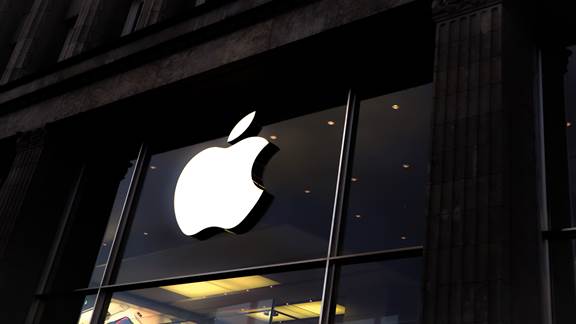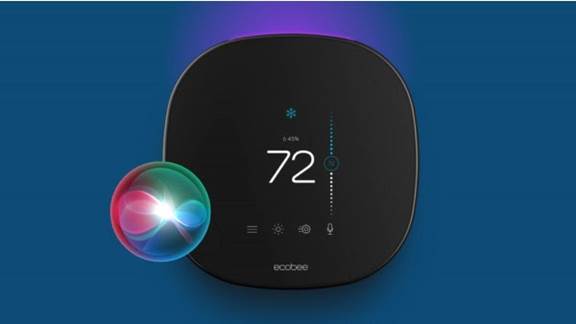Apple’s annual Worldwide Developers Conference provided some important updates about their products and platforms. The two consistent themes this year have been data privacy and collaboration. Here’s a summary of the more interesting parts of the week and what we think their implications could be for the businesses building products and changing customer expectations.

Apple WWDC 2021 announcements and what they mean for you
iOS users will have more control and visibility over the data shared with app developers
Privacy is yet again at the forefront of Apple’s software updates agenda, with a particular focus this time on customer experience.
It is no longer just about keeping customer data safe, but providing true transparency and control over it. The new iOS privacy dashboard could also give users the ability to see which apps are collecting their data and managing the permissions accordingly. Their Mail app will also be blocking pixel based email trackers, making it difficult for advertisers to know which emails have been opened. Apple will also begin obscuring IP addresses of its users during searches, making it harder for companies to track and target users.
Another new feature that has been unveiled is the new Focus mode. iOS users are now in control of what notifications they get at which parts of the day and which apps are visible when.
The impact could be vast. First and foremost, it’s shifting customer expectations for future applications. They are becoming more aware and conscious of their data and the different ways it can be used and abused. Consequently, their expectations of what good privacy should look like will advance. Secondly, if users are in control of what apps they see on their screen on a daily basis, those that take a secondary priority could become even less used as their visibility falls. This shouldn't automatically be a cause for concern. As ever, it's important to be intelligent about identifying which metrics matter most for your app. While chasing MAU increases might seem like the intuitively right thing to do, it might not be the answer for every application.
Features to empower the remote working world
It should come as no surprise that Apple is expanding its products to meet the boom in remote work and collaboration. And you can see it across a range of its additions.
One of the keynote announcements this year has been the new developments of the FaceTime app. Background noise can be blocked, background - blurred, screen - shared, music - simultaneously listened to, and calls - scheduled. Most interestingly, FaceTime will now be available for non-Apple users via the web, expanding its reach. No surprise that, on the day of this announcement, Zoom stocks briefly dipped in price. However, we are yet to see whether FaceTime will serve as a real long-term threat to the more established video conferencing solutions.
Apple is making other elements of their software more fit for the remote working set up. The new Universal Control feature means we can now seamlessly move between different devices, allowing users to control their iMac and iPad through the Macbook mouse without much prior setup. This is a particularly exciting development for those working in an industry where they benefit from having an additional Apple screen and spread - think graphic designers and other artists.

Building a more holistic health tracking experience
Apple’s emphasis on data privacy isn’t just a counter positioning to more open platforms like Google’s Android. It is also a foundation to build Apple’s case as the custodian for everything health. Most notably, the Health app can now track users’ walking steadiness and predict their chances of falling, along with an assessment of balance, stability and coordination. watchOS 8 users can also now track their respiratory rate as well as use the Health app to store medical records of vaccinations and tests. This health data is also no longer restricted to the individual user. Instead, Apple is building a more holistic health experience, allowing its consumers to share in real time their health data with their loved ones or use it during their medical appointments as a way for professionals to track progress.
The expansion of watchOS 8 into the respiratory rate functionality could also mean a more widespread use of this type of data in the health tech industry. How can other health apps use this Apple Watch data to improve their customers’ experiences and present this collated and analysed information in a more meaningful way than the Health app does? How does the wider availability of such data (i.e. beyond strictly FitBit, Garmin, etc) change the customer landscape for these apps?
Shared experiences and accessibility
Once again the impacts of the pandemic life are visible in Apple’s thinking. Shared digital experiences for social purposes are leading the way. The new FaceTime applications include an ability to watch videos together as well as listen to music. Whilst our apps are not yet fully user-friendly to ALL types of users, screen sharing at least makes it a bit easier. Think about the number of times some customers were probably trying to explain to a less tech-savvy friend how to do something on their iPhone. Digital accessibility has a long way to go of course, but this is one step closer to getting us there.
Another way Apple is addressing this issue is with the iOS’s new ability to identify text and numbers in photos and immediately use it to copy text or dial a number. The implications of this could be quite substantial for some. Think about those visually impaired and how much more difficult it could be for them to read the writing presented on a photo. Alternatively, think of the hassle that can sometimes go into manually transcribing a phone number into the phone, for instance, from a photo taken .For those struggling with coordination or for a person with atypical cognition, an ability to dial in straight from a photo could make their digital experience substantially better and easier.
At Kin + Carta, we believe that inclusionary thinking paves the path to progress and profitability. We live and breathe the ethos of Designing with Empathy (DwE) and it’s a part of how we’re making the world work better for everyone. Discover how we built an online shopping experience app for a large UK retailer with accessibility and inclusive design at its heart here >

Your Apple device, and nothing more
Apple has been continuously transforming the contents of customers’ pockets for years now. It all started with Apple Pay back in 2014, the adoption of which has been growing steadily. Back in 2016 only 9% of iPhone users had Apple Pay enabled, in comparison to 51% in 2020. And this absorption of the items we use each day into an iPhone is growing through other iOS features. With iOS 15, some users’ car keys are already digital, but now we can also see the addition of hotel keys, home keys, and driving licenses. That’s on top of the integration of customers’ vaccination records. Apple's message to consumers is clear: you might as well throw away your bag now, all you need is your iPhone.
Those in the hospitality industry are probably already paying particular attention to this development, and exploring how a mobile driven experience could be enhanced with Apple Wallet. This expansion can be seen as a sign for potential future advances in the field of customer checks in other industries. Disney has already partnered with Apple to launch MagicMobile through the Wallet app, allowing contactless entry into theme parks and hotel rooms, as well as the purchase of food and merchandise. The process of using Apple to move away from physical documents and keys should be expected to grow. Maybe we will see large corporates begin to replace their physical office passes with Apple Wallet alternatives. Potentially, customers should expect the storage of their bills and statements to be centralised into an iOS application allowing for more streamlined background checks. The fact that driving licenses are being moved into the digital format means we could expect passports and border control checks to go through a digital transformation as well. The potential for Apple as a general purpose Digital ID holder is broad and exciting.
Our iOS team, product and design experts are continuing to unpack the extensive changes that Apple shared throughout the week last week. If you'd like to discuss them, and the opportunities they might present to your organisation, please reach out to us.